“Pare down to the essence, but don't remove the poetry.”
Leonard Koren, in Wabi-Sabi: for Artists, Designers, Poets & Philosophers
Born from the Japanese aesthetic and philosophical tradition, Wabi-Sabi is more than a visual or interior design style. It is a way of looking at the world - and the spaces we inhabit - with attention to the beauty of imperfection, simplicity, and the passage of time. Rooted in the principles of Zen Buddhism, this concept invites contemplation of the natural, the incomplete, and the ephemeral, challenging the modern obsession with symmetry and the brilliance of the new.
In the context of contemporary interior design, Wabi-Sabi proposes a more sensitive and intuitive approach. Instead of seeking to eliminate flaws, it values what is authentic: surfaces marked by use, materials that age with dignity, and objects that tell stories. This imperfect aesthetic is not a renunciation of good taste. It is an affirmation that true sophistication lies in harmony with nature, the texture of the real, and the impermanent's serenity.
In this article, we will explore the principles of Wabi-Sabi and how they can be applied to modern interior design projects through conscious choices of materials, shapes, and atmospheres.
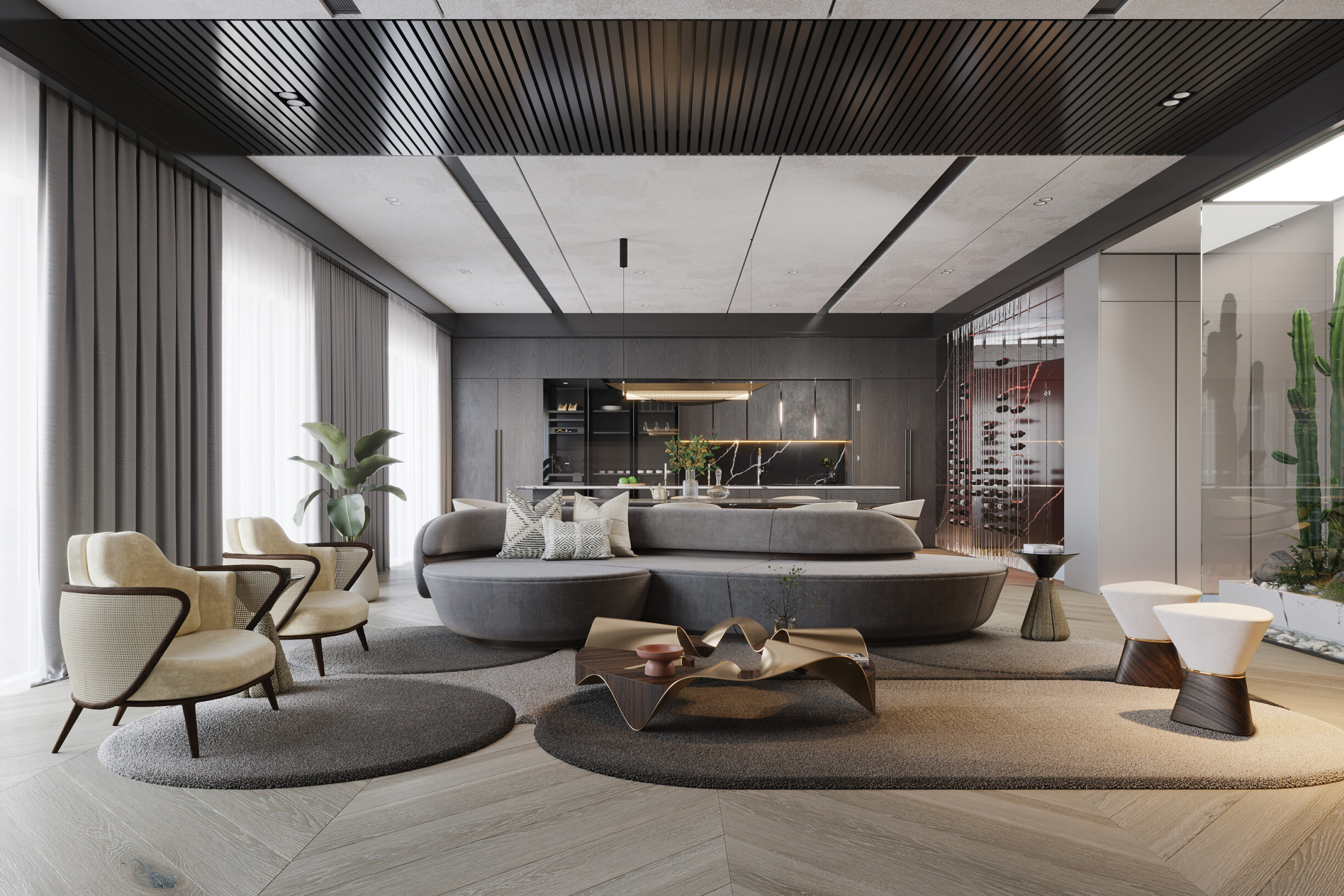
The expression Wabi-Sabi results from the fusion of two concepts rooted in Japanese culture. Wabi refers to the rustic simplicity, modesty, and beauty found in nature. In turn, Sabi relates to the passage of time and the serenity that comes from experience. Together, they form a worldview that values imperfection, impermanence, and authenticity.
With roots in Zen Buddhism, this philosophy developed as a spiritual response to the ephemerality of life. Wabi-Sabi beauty is neither obvious nor ostentatious — it is in the discreet details, the silence between forms, and the acceptance of the unfinished. A vase with a crack, a fabric aged by use, a piece of wood marked by time: all these are expressions of beauty from this perspective.
Wabi-Sabi counters the design world's excess, artifice, and rapid consumption. Instead of chasing constant novelty, it invites contemplation of what is real, natural, and lasting. This philosophical approach is at the heart of trends such as the Japandi Style, where Japanese aesthetics merge with Scandinavian functionality, resulting in serene, authentic, and intentionally imperfect areas.
It is an aesthetic that demands time and attention and that, in return, produces a feeling of deep harmony.
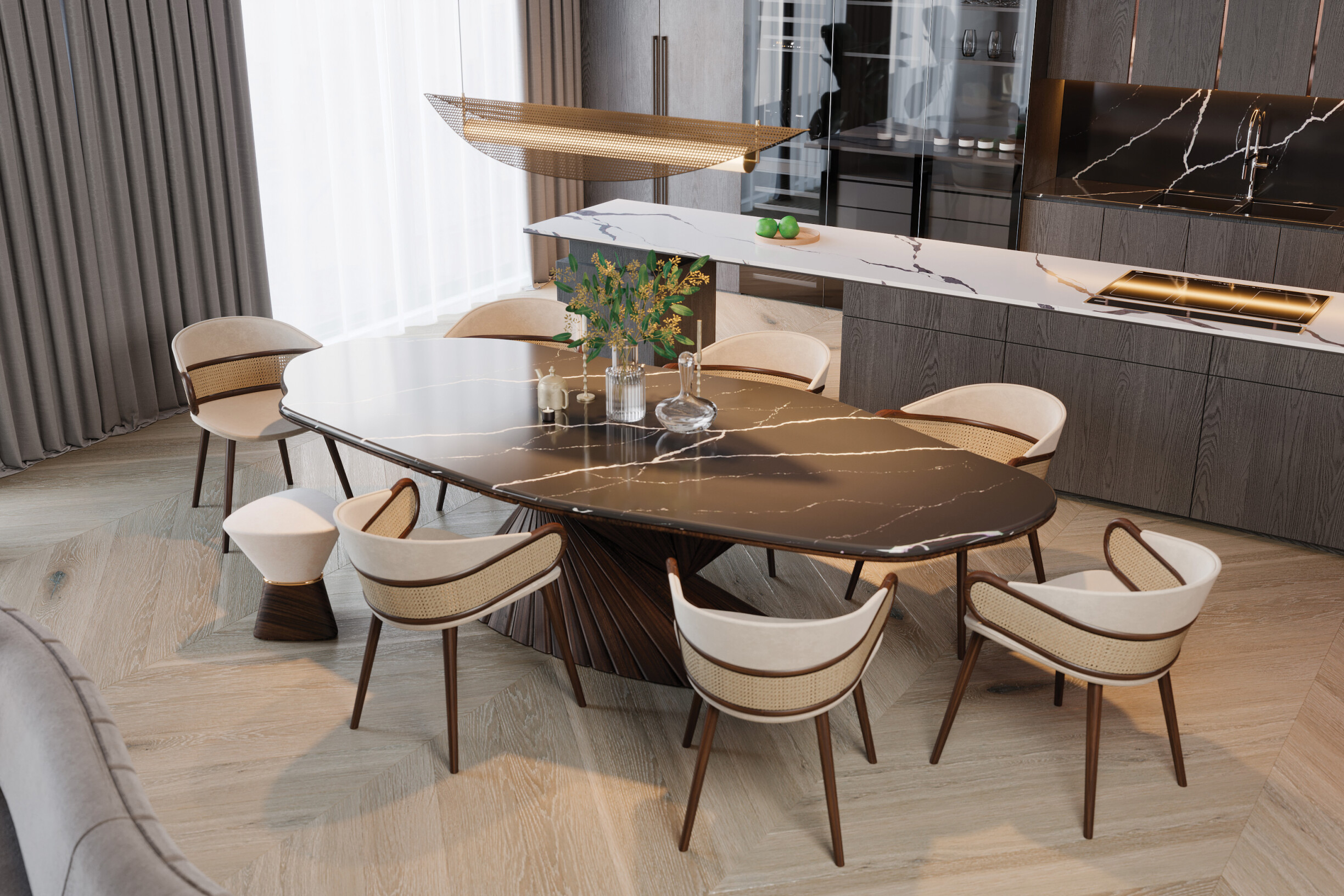
Embodying the imperfect aesthetic of Wabi-Sabi does not mean creating sloppy or unfinished spaces - on the contrary, the challenge is to create an intentional composition that values the essence and uniqueness of each element. The key lies in the conscious choice of materials, formal simplicity, and valuing objects with history, texture, and character.
Imperfection, in this context, is poetic. It could be in wood with marked veins, stone with organic colour variations, or handmade ceramics that reveal the human touch. These details—which go beyond mass production and predictability—give a space soul.
Pieces with organic shapes or artisanal finishes reinforce this aesthetic. The Bonsai dining table by ALMA de LUCE, with its nature-inspired silhouette, conveys a sense of unstable balance that is, paradoxically, profoundly harmonious.
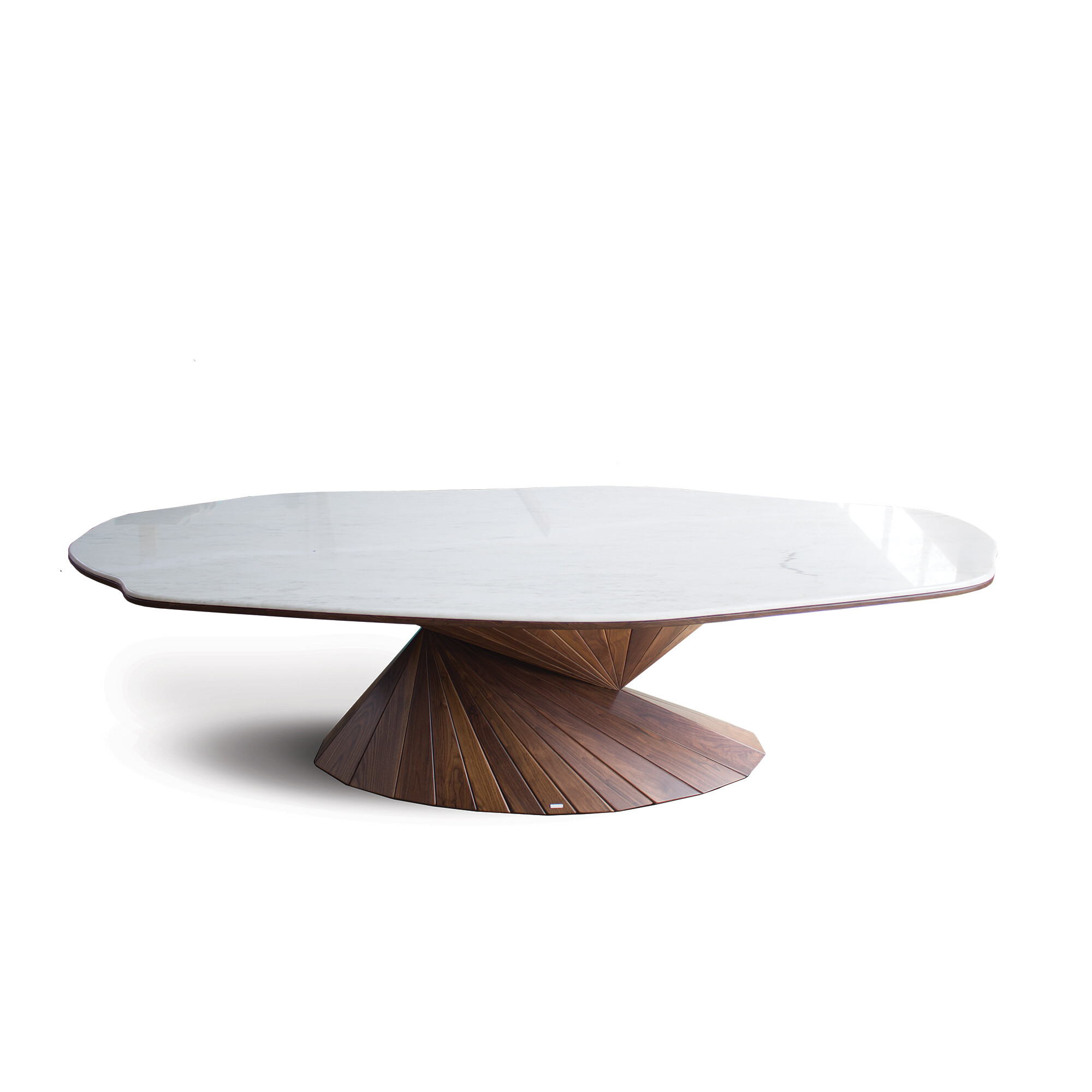
The At-Turaif Sideboard, with its finish that evokes the time and memory of a place, demonstrates how authenticity can coexist with sophistication.
Textiles are also important allies in this approach. Rugs like the Antelope Canyon or the Tecelã, with their asymmetrical visual compositions and patterns that evoke manual processes, add layers of expression and authenticity.
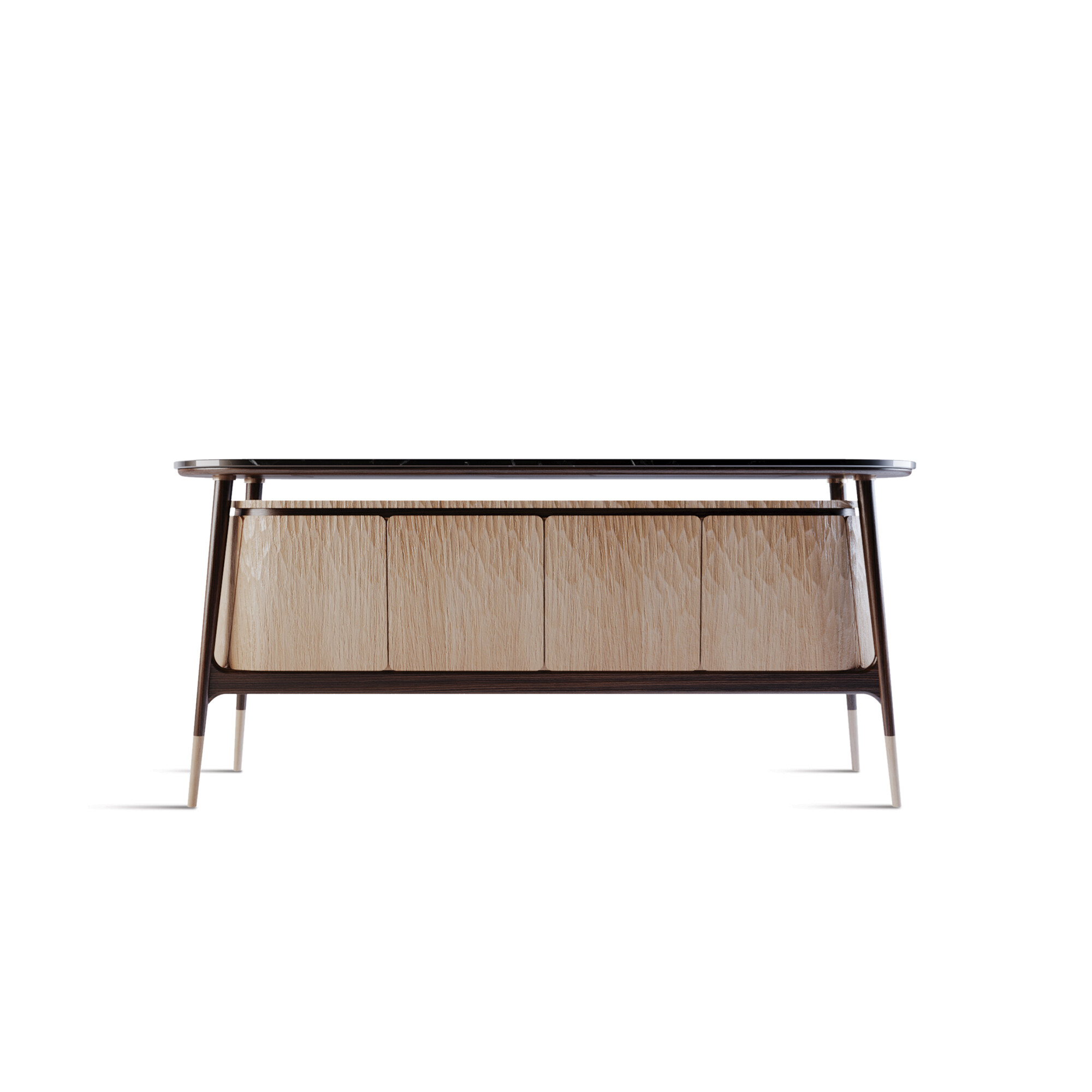
The Wabi-Sabi aesthetic is based on an intimate relationship with nature. The materials used are neither neutral nor generic, as they have their origin, texture, and temperature. They awaken the senses and evoke a primitive connection with the natural world. In this approach, each material is chosen for its authenticity rather than for trying to look like something it is not.
Solid wood with exposed grain, marble, natural ceramics, linen, or wool in an almost raw state. All of these materials share one fundamental characteristic: they are naturally imperfect. Its variations are not corrected but celebrated, and time marks - such as cracks, stains, or colour changes - are differentiating elements.
These materials create a complete sensory experience: the floor that invites you to walk barefoot, the surface you want to touch, or even the piece that seems to have a story. It's not just about decorating; it's about creating an atmosphere where the body and mind can rest.
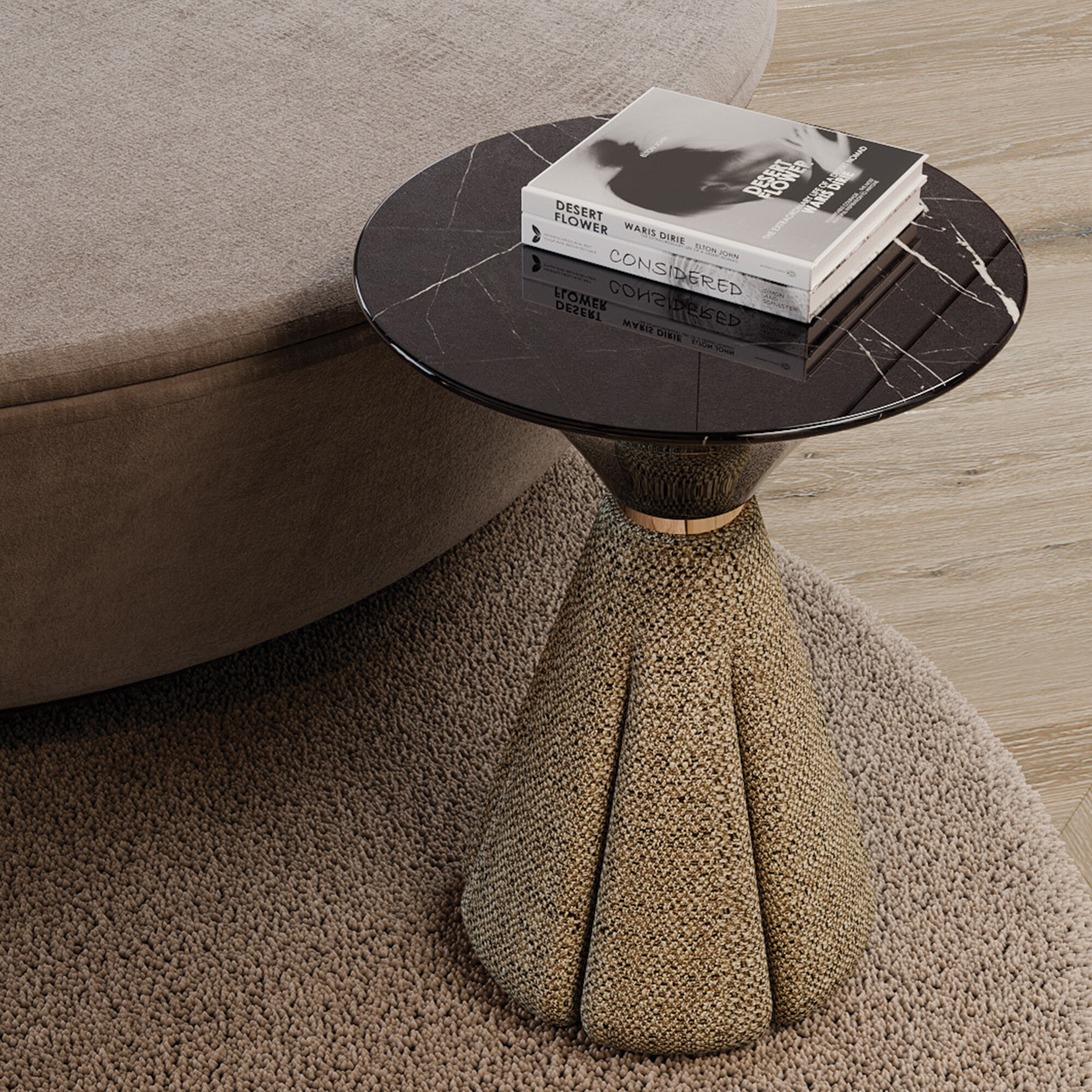
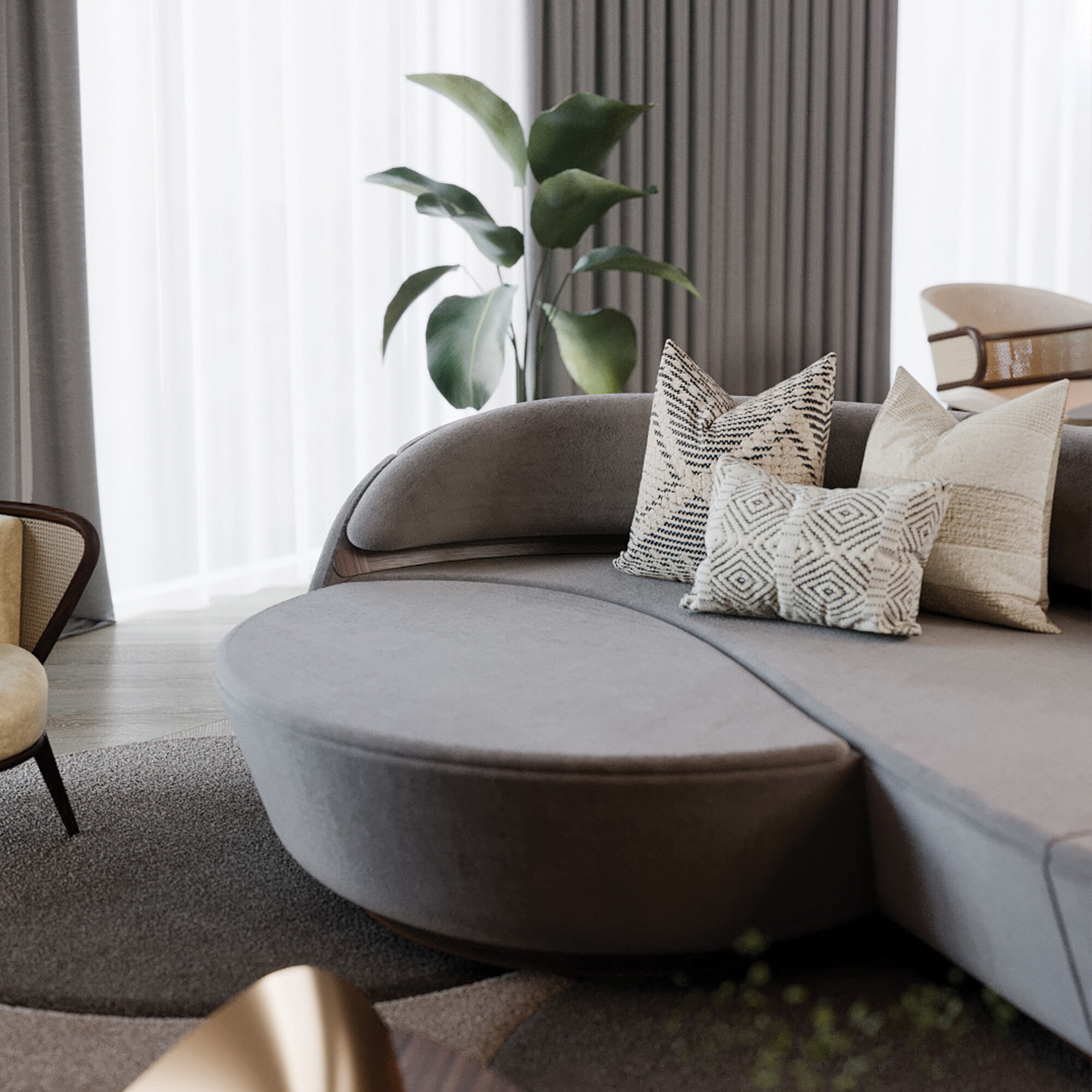
In a fast-paced world saturated with visual stimuli and constant demands, interior design becomes an extension of mental and emotional health. Wabi-Sabi responds to this need with a balanced proposal: creating spaces that welcome and invite silence, pause, and contemplation—spaces that promote well-being not through excess but through subtraction.
This aesthetic brings us closer to a more serene and rooted experience by valuing simplicity and impermanence. The absence of visual overload reduces cognitive overload; natural materials regulate the emotional temperature of spaces; imperfection awakens empathy.
Using elements such as diffused light, soft or neutral colour palettes, and organic textures can reinforce an atmosphere of tranquility. If you opt for a rug like Moon from ALMA de LUCE in a living room, you will take advantage of its fluid shape and neutral tones to create this sensorial language. Furthermore, choosing furniture with unpolished finishes or slightly irregular surfaces conveys a sense of authenticity and closeness, making the space more human and habitable.
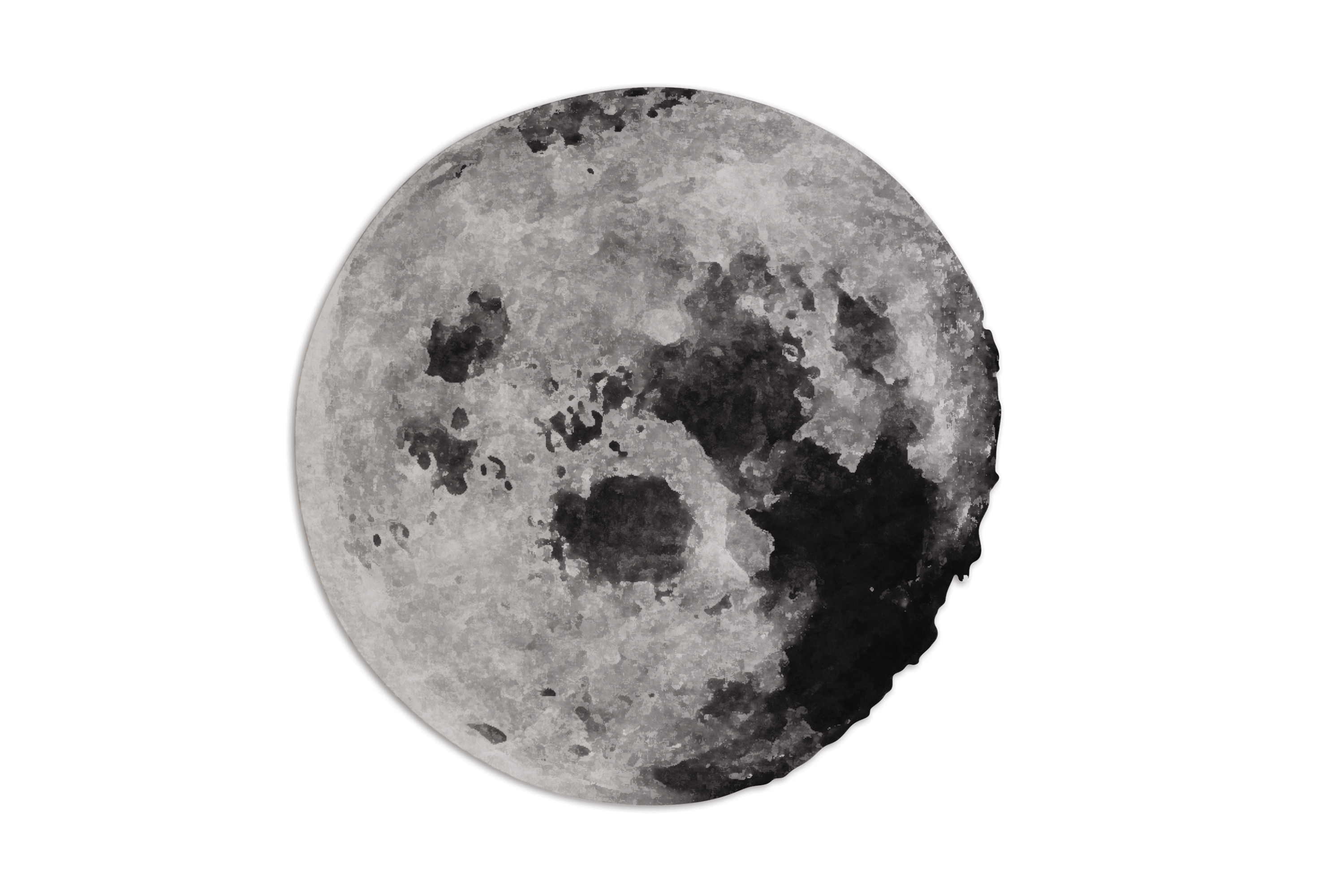
Adopting Wabi-Sabi in interior design projects requires sensitivity, attention to detail, and finding beauty where imperfection was previously seen. These three practical guidelines help you apply this philosophy authentically and sophisticatedly.
1. Valuing the unfinished and asymmetrical
Wabi-Sabi challenges perfection, promoting the beauty of asymmetry and imperfection. In a dining room, we can apply this philosophy by opting for furniture that has a unique presence, such as the Bonsai dining table. With its organic design and asymmetrical contours, this table serves as a focal point and creates an area of fluidity and natural harmony. The furniture evokes the simplicity of nature without worrying about adapting to a rigid format, which brings an instinctive balance to the space.
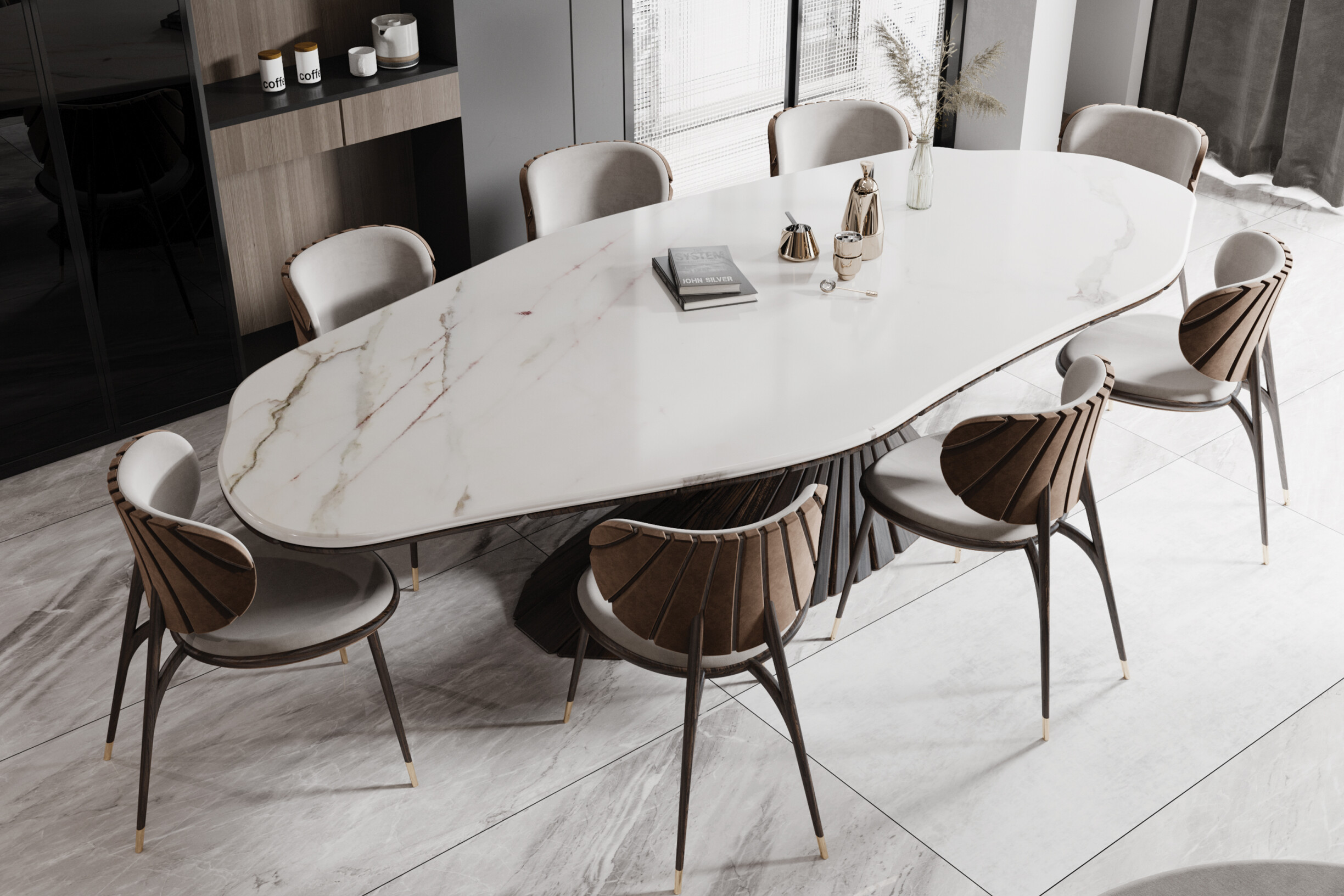
2. Incorporating pieces with history
Wabi-Sabi values time and the marks it leaves, celebrating the beauty of imperfection and memory. In the lobby, a transitional space that often sets the tone for the entire home, we can use furniture with a strong presence and a story to tell, like the At-Turaif Sideboard. This sideboard, with its design inspired by traditional architecture, serves as a functional element and evokes the past, bringing a sense of authenticity and connection to cultural roots.
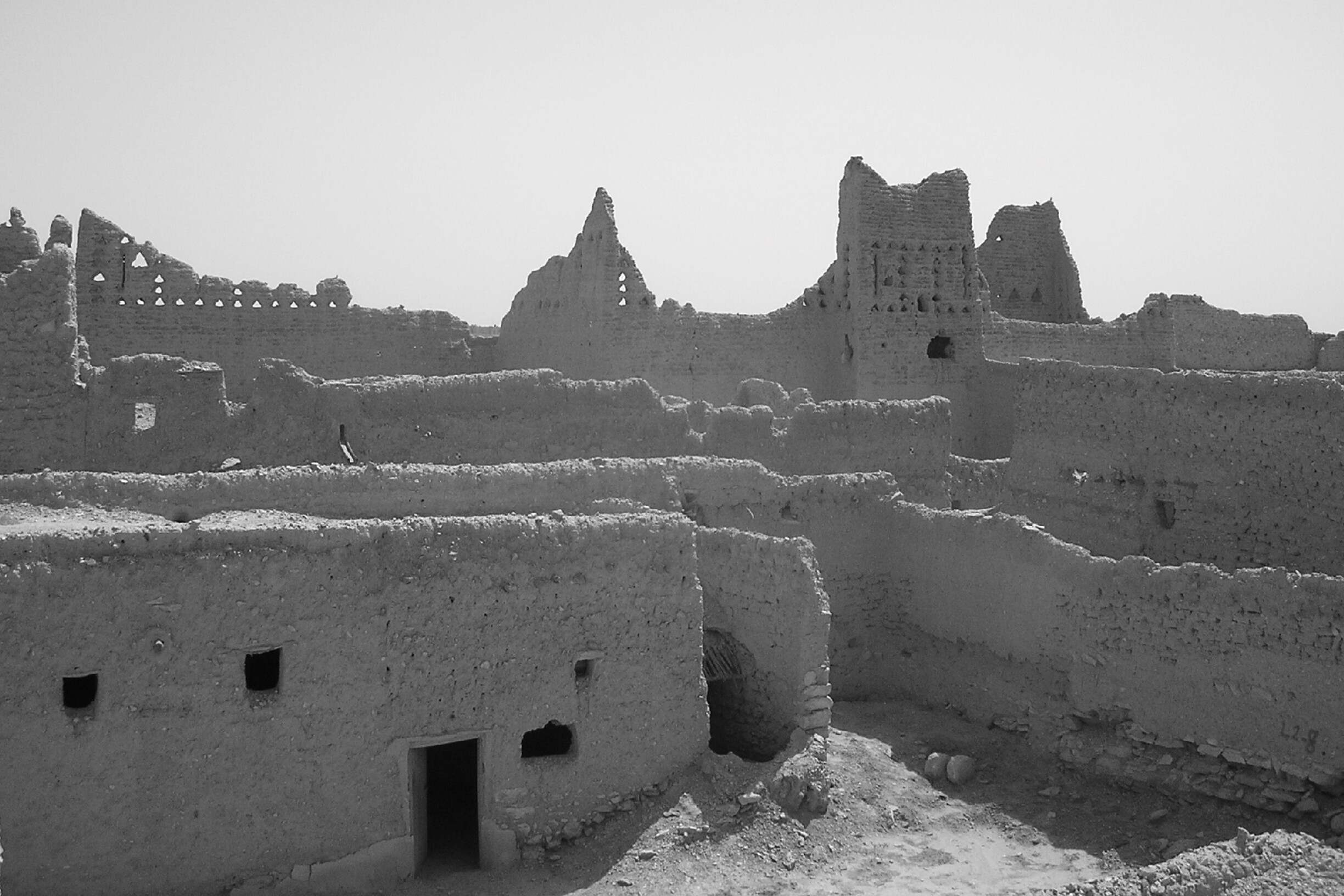
3. Create sensory atmospheres
Wabi-Sabi emphasizes the sensory connection with the space, valuing the influence of nature and authentic textures. In the office, where concentration and focus are essential, we can create a calm, balanced atmosphere with natural elements that stimulate creativity and well-being. The Tecelã Rug is ideal for this space. With its handcrafted texture and organic patterns, this rug offers walking comfort and contributes to a welcoming and focused room. Its discreet colours and shapes allow the space to breathe, promoting a balance between functionality and aesthetics.
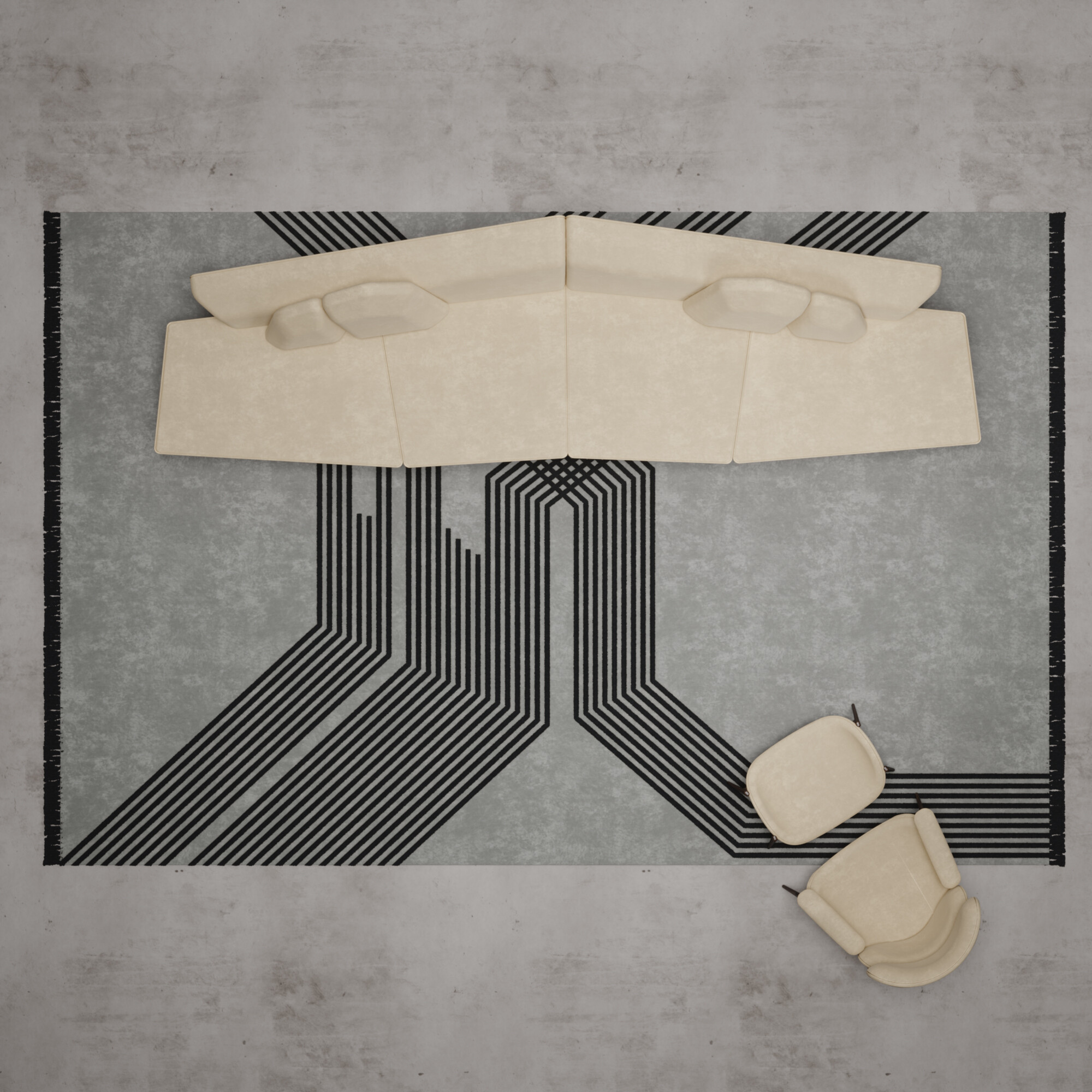
Wabi-Sabi is more than aesthetics; it is a philosophy that invites us to appreciate the beauty of imperfections and celebrate the simplicity of nature. The key ideas of this concept can be applied in interior design projects to create visually harmonious spaces that enhance users' well-being. Whether through furniture that tells a story or pieces that engage the senses, Wabi-Sabi allows you to transform projects into experiences.
Are you ready to use Wabi-Sabi ideas in your projects? See some inspirations on Alma de Luce's Pinterest that best suit your needs, your tastes, or your client's desires. Once you're inspired, want some help getting started? Contact us here.😉
Also, did you know that we regularly update our blog to bring you all the news and content about interior design, interior architecture, and decoration? Just be aware!